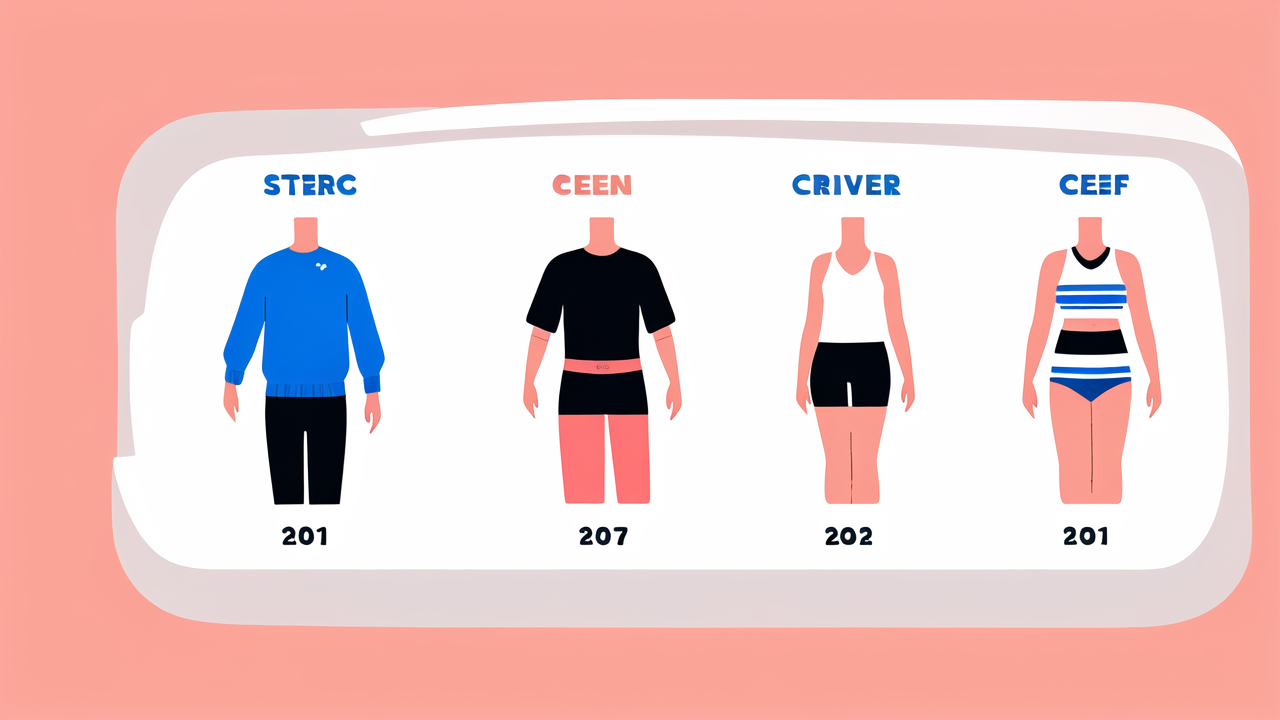Understanding Wearable Technology in the Fashion Industry
The Evolution of Wearable Tech: A Brief History
Wearable tech has come a long way since its early days. It started with simple devices like calculator watches in the 1970s. Today, we have smart clothing that can monitor our health and adjust to our needs.

The 1990s saw the rise of wearable computers. These were bulky and not very practical. But they paved the way for more sleek designs. In the 2000s, fitness trackers became popular. They showed that tech could be both useful and stylish.
Now, we're seeing a boom in smart clothing. These garments can do things like:
- Monitor heart rate and breathing
- Adjust temperature based on body heat
- Change color or pattern on demand
- Charge our devices as we move
This evolution shows how tech and fashion are becoming more intertwined. It's not just about function anymore. It's about looking good while being connected.
Key Technologies Revolutionizing Fashion
Several key technologies are changing the face of fashion. These innovations are making clothes smarter and more interactive. Here are some of the most exciting ones:
- E-textiles: Fabrics with built-in electronic components
- Conductive threads: Allow electricity to flow through clothes
- Flexible sensors: Can detect movement, pressure, or temperature
- Miniaturized batteries: Provide power without adding bulk
- Bluetooth and NFC: Connect clothes to smartphones and other devices
These technologies are enabling new features in clothing. For example, jackets that can warm up or cool down. Or shirts that can track your workout and give feedback. Some clothes can even change color or pattern with the tap of an app.
The key is making these features seamless and comfortable. No one wants to wear a bulky, stiff shirt just because it's "smart". The goal is to add tech without sacrificing style or comfort.
Challenges and Opportunities for Fashion Designers
The rise of wearable tech presents both challenges and opportunities for fashion designers. On one hand, they must learn new skills. They need to understand how to integrate tech into their designs. This can be a steep learning curve.
But it also opens up new possibilities. Designers can create clothes that do more than just look good. They can make garments that adapt to the wearer's needs. This could lead to more personalized and functional fashion.
Some challenges include:
- Balancing tech features with aesthetics
- Ensuring durability and washability of smart clothes
- Keeping costs down while adding high-tech features
Opportunities include:
- Creating new, innovative designs
- Attracting tech-savvy consumers
- Developing sustainable, long-lasting clothing
Designers who can overcome these challenges will be at the forefront of fashion's future. They'll be creating the next generation of smart, stylish clothing.
Smart Clothing and Consumer Behavior: A Market Analysis
The Growth of the Wearable Tech Clothing Segment
The wearable tech clothing market is booming. It's growing faster than anyone expected. In 2020, the global market was worth about $1.6 billion. By 2026, it's expected to reach $5.3 billion. That's a huge jump in just a few years.

Why this rapid growth? Several factors are at play:
- Increased health awareness
- Rising interest in fitness tracking
- Growing adoption of smart devices
- Advances in textile technology
- Demand for more functional clothing
More and more people want clothes that do more than just cover their bodies. They want garments that can track their health, adjust to their needs, and connect to their other devices.
Big brands are taking notice. Companies like Under Armour, Levi's, and Ralph Lauren are all investing in smart clothing. This is helping to bring wearable tech to the mainstream.
Consumer Trends Driving Wearable Technology Adoption
Several consumer trends are pushing the adoption of wearable tech clothing. Understanding these can help predict where the market is heading.
- Health and wellness focus: People want to track their health easily and constantly.
- Convenience: Smart clothes offer features that make life easier.
- Personalization: Consumers want products that adapt to their specific needs.
- Eco-consciousness: Smart clothes can be more sustainable and long-lasting.
- Tech integration: People want their clothes to work with their other devices.
These trends show that consumers are ready for smarter clothing. They want garments that can enhance their lives in meaningful ways. This could be through health monitoring, comfort features, or just cool tech tricks.
The key is making these smart features feel natural and effortless. Consumers don't want to feel like they're wearing a computer. They want clothes that are smart, but still feel like clothes.
Ethical Considerations in Smart Fashion
As smart fashion grows, so do ethical concerns. These issues need to be addressed for the industry to thrive. Some key ethical considerations include:
- Privacy: Smart clothes collect a lot of data. How is this data protected?
- Security: Can smart clothes be hacked? What are the risks?
- Accessibility: Will smart fashion be affordable for everyone?
- Environmental impact: How sustainable are smart clothes?
- Labor practices: Are workers in this new industry treated fairly?
Companies need to be transparent about how they handle these issues. Consumers are becoming more aware and demanding when it comes to ethics.
Privacy is a big concern. Smart clothes can collect sensitive health data. Companies need to be clear about what data they collect and how they use it.
Sustainability is another key issue. Smart clothes should not add to the fashion industry's waste problem. Companies need to find ways to make tech-enhanced clothing that lasts.
The Future of Wearable Tech in the United States Market
Innovative Startups Shaping the Future of Wearable Tech
Startups are driving much of the innovation in wearable tech clothing. These small companies are coming up with big ideas. They're pushing the boundaries of what's possible in smart fashion.

Some exciting startups to watch include:
- Athos: Makes smart workout clothes that track muscle activity
- Hexoskin: Creates shirts that monitor heart rate, breathing, and movement
- Sensoria: Develops smart socks and other fitness wear
- Loomia: Makes heating elements that can be sewn into clothing
- Myant: Creates knitted sensors for health monitoring
These startups are tackling different aspects of smart clothing. Some focus on fitness and health tracking. Others are working on comfort features like heating and cooling.
What sets these startups apart is their focus on seamless integration. They're trying to make tech that feels natural in clothing. This could help bring smart fashion to the mainstream.
Regulatory Impact on Wearable Technology Clothing
As wearable tech clothing grows, so does the need for regulation. This is a new field, and laws are still catching up. The main areas of concern are:
- Data privacy: How is personal data collected and used?
- Safety standards: Are these clothes safe to wear long-term?
- Medical claims: Can smart clothes make health-related claims?
- Consumer protection: What rights do buyers of smart clothes have?
In the U.S., several agencies are involved. The FDA looks at health-related wearables. The FTC watches for false advertising claims. The CPSC ensures product safety.
These regulations can impact how companies design and market smart clothes. They need to balance innovation with compliance. This can be challenging, but it's crucial for building consumer trust.
As the industry grows, we may see more specific laws for smart clothing. These could help set standards and protect consumers.
Predicting the Next Big Trends in Smart Fashion
The future of smart fashion looks exciting. Based on current trends and innovations, we can predict some possible directions:
- Adaptive clothing: Garments that change based on the environment or wearer's needs
- Enhanced personalization: Clothes that learn and adapt to individual preferences
- Improved integration: Seamless connection between clothes and other smart devices
- Sustainable tech: More eco-friendly materials and manufacturing processes
- Health-focused features: Advanced health monitoring and diagnostics
We might see clothes that can change color or pattern on demand. Or jackets that adjust their insulation based on the temperature. Health monitoring could become more advanced, potentially alerting wearers to health issues.
The key will be making these features subtle and stylish. The most successful smart clothes will be those that don't look "smart" at all. They'll just look like great fashion that happens to have amazing capabilities.
As technology improves, the line between fashion and tech will blur even more. The future of fashion is smart, connected, and tailored to each wearer's needs.




Leave a comment
This site is protected by hCaptcha and the hCaptcha Privacy Policy and Terms of Service apply.